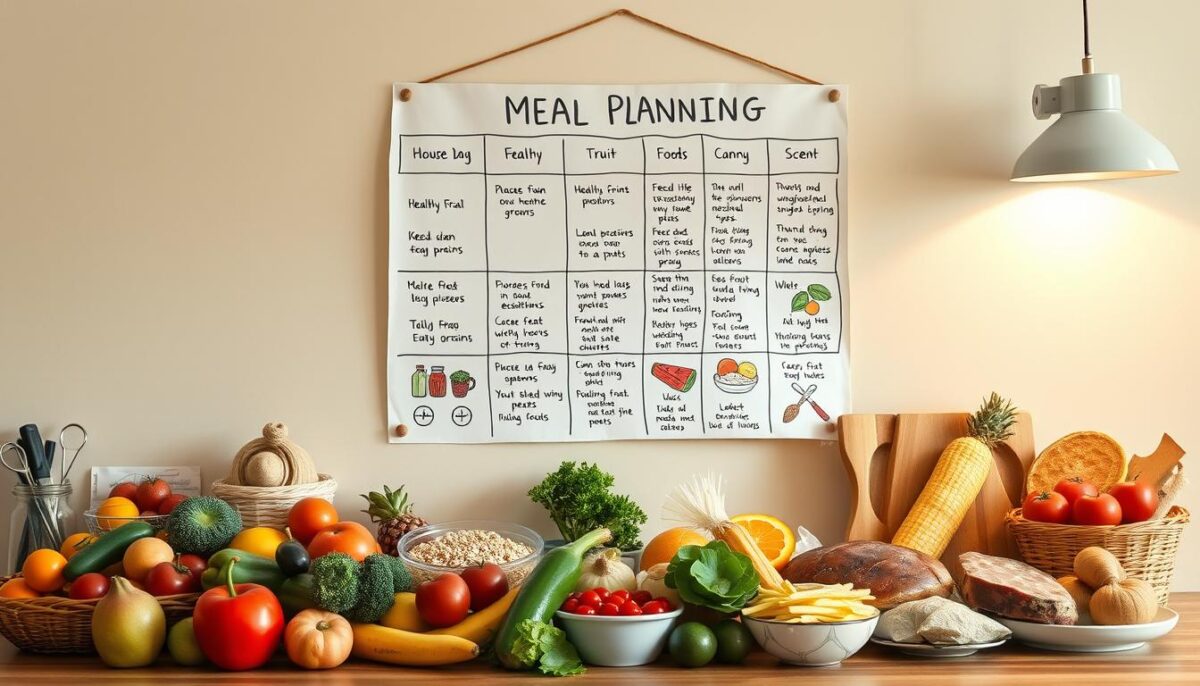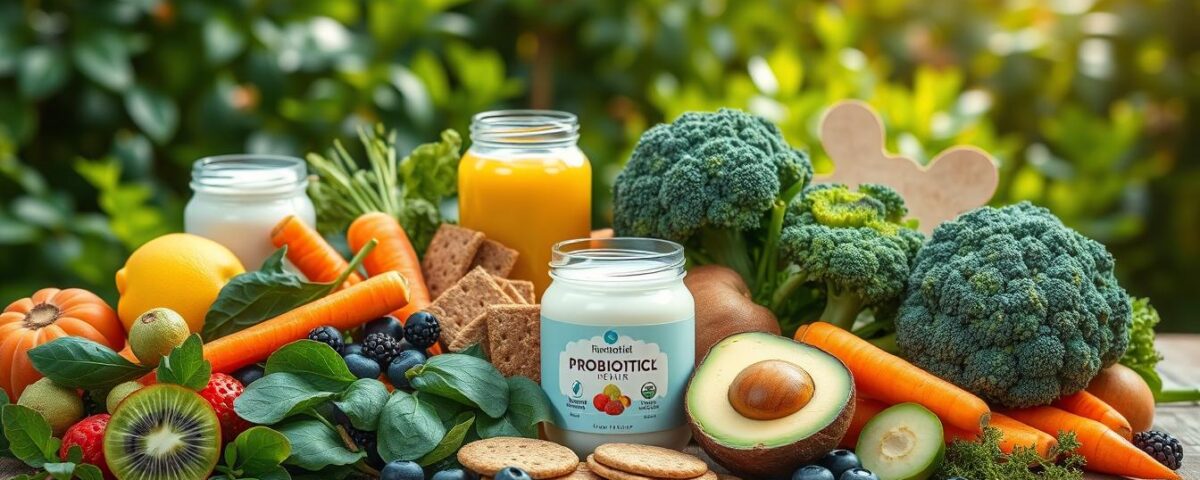
Delicious Breakfast Ideas That Boost Your Child’s Brainpower
June 18, 2025
Common Nutrition Mistakes That Stunt Your Child’s Growth
June 19, 2025Last summer, my 8-year-old struggled to focus during virtual school. After swapping sugary snacks for fiber-rich options like apples and oats, I noticed something surprising. Within weeks, her energy stabilized, and she started acing math quizzes. It wasn’t magic—it was her digestive tract working smarter.
Did you know 70% of the body’s immune cells live in the digestive system? That chicken nugget your kid just ate isn’t just fuel—it’s shaping their ability to fight colds and solve puzzles. Research shows balanced bacteria in young ones can improve memory retention by up to 15%.
When I began tracking my daughter’s meals, I saw firsthand how whole grains reduced tummy aches during soccer practice. Foods like quinoa and berries became our secret weapons. They didn’t just keep her regular—they helped her stay alert during afternoon classes.
Key Takeaways
- A child’s digestive system turns food into energy and brain-boosting nutrients
- Healthy gut bacteria strengthen immunity against common illnesses
- Fiber-rich choices like oats support both physical and mental performance
- Simple diet swaps can prevent digestive discomfort in active kids
- Proper nutrition during meals impacts focus and learning abilities
This article will walk you through practical ways to build better eating habits. From sneaking nutrition into picky eaters’ plates to timing meals for optimal absorption, you’ll discover strategies that work in real life—not just in textbooks.
Exploring Gut Health Kids: Building a Foundation for Immunity and Brain Health
After months of playground coughs, changing breakfast habits became our family’s game-changer. I discovered that what fuels little bodies also shapes their defense mechanisms and thinking skills—all starting in an unexpected place.
The Critical Role of the Gut in Children’s Well-Being
Your child’s digestive tract acts like a security guard and tutor combined. Helpful microbes here teach immune cells to recognize invaders while breaking down foods into brain-nourishing nutrients. When my niece swapped juice boxes for sliced pears, her daycare absences dropped by half.
Studies show diverse bacteria populations help young ones absorb 40% more vitamins from broccoli and spinach. But antibiotics—while sometimes necessary—can wipe out these microscopic allies. One research paper notes that restoring balance after medication requires at least 8 weeks of probiotic-rich foods like yogurt.
How a Healthy Gut Sets the Stage for Overall Health
I learned through trial and error that variety matters more than perfection. Offering three different colored veggies at lunch (think carrots, peas, and bell peppers) cultivates a resilient microbiome. My son’s concentration during homework improved noticeably when we introduced this rainbow approach.
Parents hold surprising power through simple choices. Swapping white bread for whole-grain versions or adding berries to pancakes creates lasting benefits. These tweaks don’t just prevent tummy troubles—they build a foundation for sharper minds and stronger defenses against classroom germs.
The Power of Nutrition and Gut-Friendly Foods
Mealtime battles used to leave me exhausted until I discovered how strategic choices could transform picky eating into progress. What we put on the plate doesn’t just fill tiny bellies—it shapes how their bodies process fuel and fight off setbacks.
Fiber-Rich Options to Beat Constipation
Stubborn tummy troubles vanished when I swapped crackers for roasted sweet potatoes. Whole grains like brown rice and quinoa became lunchbox staples, while raspberries added a sweet crunch to morning oatmeal. Research shows these choices can increase bowel movement frequency by 30% in children.
I now keep sliced cucumbers and hummus within reach for quick snacks. This simple shift helped my nephew go from weekly stomach aches to regular bathroom trips. “Fiber acts like a broom,” our pediatrician explained. “It sweeps through the system, keeping things moving smoothly.”
Incorporating Probiotics Through Fermented Foods
Introducing tangy flavors took creativity. Mixing plain yogurt with mashed berries disguised the sour taste while delivering live cultures. Kefir smoothies became our secret weapon—blended with frozen mango, even my texture-sensitive child gulps them down.
Sauerkraut surprised us all. Adding a teaspoon to turkey wraps gave meals a zesty kick without overpowering young taste buds. Studies suggest fermented options boost beneficial bacteria populations faster than supplements alone.
Balance remains key. I limit sugary treats that feed unhelpful microbes, opting for dark chocolate-covered almonds when cravings strike. This approach keeps digestion steady and energy levels stable during soccer practice and math drills alike.
Smart Strategies for Enhancing Digestive Health
During a hectic back-to-school shopping trip, I realized our cart held more boxed snacks than fresh produce. That moment sparked a kitchen overhaul focused on simple swaps that protect tiny tummies while boosting overall wellness.

Practical Home-Based Tips for Everyday Meals
Sunday meal prep became my secret weapon. I now roast two trays of veggies while boiling eggs for quick breakfasts. This ensures grab-and-go options that beat sugary cereals. For picky eaters, try blending spinach into smoothies – the vibrant color hides the greens perfectly.
| Processed Pick | Gut-Friendly Swap | Benefit |
|---|---|---|
| Flavored yogurt | Plain Greek yogurt + fresh fruit | Reduces added sugars |
| White pasta | Lentil or chickpea pasta | Doubles fiber intake |
| Potato chips | Air-popped popcorn | Adds whole grains |
Keep sliced cucumbers and hummus on lower fridge shelves for easy access. My nephew’s after-school hunger now fuels his body with nutrients instead of empty calories.
Recognizing When It’s Time to See a Doctor
While occasional tummy rumbles are normal, persistent issues warrant attention. Watch for:
- Three+ days without bowel movements
- Complaints of burning during bathroom trips
- Visible bloating that lasts hours
Our pediatrician warned: “Frequent antibiotic use can wipe out good bacteria like factory resetting a computer.” Always ask if medications are truly needed – sometimes rest and hydration work better.
When my daughter developed unusual food aversions paired with stomach cramps, testing revealed a temporary intolerance. Early intervention prevented bigger issues and taught us to track patterns in a food journal.
Leveraging the Gut-Immune Connection
When my son’s pediatrician suggested probiotics after a round of antibiotics, I didn’t realize we were strengthening his body’s defenses. Our intestinal tract houses 70% of our immune cells—a fact that changed how I view every snack and meal.
How Beneficial Bacteria Boost Children’s Immunity
Helpful microbes act like microscopic bodyguards. They crowd out harmful germs while training immune cells to recognize threats. A 2023 study found children with diverse bacteria populations had 25% fewer respiratory infections during flu season.
I learned the hard way about antibiotics. After my daughter’s ear infection treatment, we restored balance with kefir and kimchi. Our doctor warned: “One course can wipe out good strains for months—only use when truly necessary.”
Now, we prioritize fermented foods at breakfast. A tablespoon of sauerkraut in scrambled eggs or yogurt parfaits with live cultures became tasty habits. These choices support beneficial gut microbes that strengthen the intestinal barrier against pathogens.
Research shows this microbial shield does double duty. It prevents disease while helping absorb nutrients critical for overall health. Simple swaps like replacing juice with kombucha or adding miso to soups make a measurable difference in my child’s resilience.
Encouraging Mindful Eating and Healthy Habits
During my niece’s birthday party, I watched kids devour rainbow cupcakes while ignoring carrot sticks. That moment sparked a mission to make nutrition engaging rather than obligatory. Small changes in how we approach meals can transform picky eaters into curious food explorers.

Fun Ways to Involve My Child in Meal Planning
Letting my daughter pick one new veggie each week turned grocery trips into treasure hunts. We created silly names for dishes—”dinosaur broccoli trees” disappeared faster than plain greens. Weekend smoothie experiments became our ritual, blending kefir with frozen berries for probiotic-packed treats.
| Old Snack | New Favorite | Benefit |
|---|---|---|
| Fruit gummies | Yogurt dots (freeze like yogurt in drops) | Live cultures + calcium |
| Cheese crackers | Roasted chickpeas | Fiber boost |
| Pudding cups | Chia seed jars | Omega-3s + protein |
Creating a Gut Garden Chart for Daily Tracking
Our fridge now displays a colorful “microbe map.” Stickers mark when we eat fermented foods or whole grains. Three sauerkraut stars? We celebrate with a family dance-off. This visual aid helps kids connect food choices to how they feel.
Managing Sugar and Processed Foods for Balanced Nutrition
Instead of banning sweets, we make smarter swaps. Dark chocolate-covered almonds satisfy cravings while supporting gut microbes. When baking, I replace half the sugar with mashed bananas—a trick that’s saved birthday cakes from becoming sugar bombs.
Our pediatrician shared a golden rule: “Focus on what to add, not just remove.” Adding sliced peppers to pizza night or mixing riced cauliflower into mac and cheese maintains the fun while boosting variety. These gradual shifts create lasting habits without dinner-table battles.
Conclusion
During a chaotic family dinner last month, I realized how far we’d come. What began as desperate attempts to soothe tummy troubles became a roadmap for stronger bodies and sharper minds. Our journey proved that tiny tweaks in foods and routines can reshape a child’s future.
The connection between their digestive system and overall wellness still amazes me. Those yogurt parfaits and veggie-packed lunches did more than prevent stomachaches—they built an army of helpful microbes. Research confirms what I witnessed: balanced gut environments help young bodies fight germs while absorbing brain-fueling nutrients.
Three changes made the biggest difference:
1. Adding fermented options like kefir smoothies
2. Swapping processed snacks for fiber-rich alternatives
3. Tracking patterns over weeks instead of days
When my neighbor’s son faced constant colds, I shared these strategies. Within two months, his school attendance improved. But remember—persistent issues need professional insight. Always consult your doctor if discomfort lasts beyond three days.
Every meal is a chance to invest in their long-term resilience. Start with one probiotic-rich food this week. Add another colorful veggie next month. Small steps, taken consistently, create lasting change. Our family’s story shows that time and thoughtful choices truly matter.
FAQ
How can I introduce fermented foods if my child is a picky eater?
I start by mixing small amounts of options like kefir or sauerkraut into familiar dishes—think smoothies or mashed potatoes. Over time, their taste buds adapt, and they’ll likely accept these tangy flavors without a fuss!
What are signs my little one’s digestive system might need support?
Look for frequent tummy aches, irregular bathroom habits, or sudden mood swings. Persistent issues like gas or diarrhea could signal it’s time to tweak their diet or chat with their pediatrician.
Are whole grains really that important for digestion?
Absolutely! Whole grains like oats or quinoa are packed with fiber, which keeps things moving smoothly. I swap refined carbs for these nutrient-rich picks to help prevent constipation and feed good bacteria.
Can sugary snacks harm my kid’s gut microbiome?
Too much sugar fuels harmful bacteria, disrupting balance. I limit treats and opt for naturally sweet choices like berries or applesauce sweetened with cinnamon. Moderation is key!
What probiotic-rich foods work besides yogurt?
Try miso soup, kombucha (low-sugar versions), or fermented pickles. Even a spoonful of kimchi added to rice bowls can boost their intake of beneficial bacteria without dairy.
How do antibiotics affect their tiny tummies?
While antibiotics fight infections, they can wipe out good bacteria too. I always pair prescribed meds with probiotic-rich meals and consult their doctor about supplements to rebuild their gut flora afterward.
Any quick home remedies for occasional constipation?
Hydration first! I offer water-rich fruits like watermelon and add chia seeds to oatmeal. A warm bath or gentle belly massage can also ease discomfort naturally.
Why does the gut-immune link matter so much in early years?
Nearly 70% of immune cells live in the gut! By nurturing their microbiome with diverse foods, I’m helping their body recognize threats faster and build resilience against common bugs.



